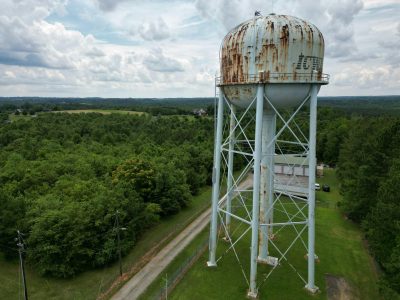Widgetized Section
Go to Admin » Appearance » Widgets » and move Gabfire Widget: Social into that MastheadOverlay zone
Water is Cheap, But Infrastructure is Expensive
The views expressed are those of the author and do not necessarily reflect the views of ASPA as an organization.
By Savanna Batson
March 14, 2025

Water is cheap; water infrastructure, however, is expensive. That’s often the most succinct explanation available to ratepayers when their local government and community leaders seek approval to raise the rates that water and wastewater customers must pay in order to finance much-needed infrastructure improvements. Water is cheap, but the largely infrastructure necessary to draw water from its source, treat it, pipe it into homes, remove wastewater from the home and render it safe to discharge is expensive, and it’s only becoming more so as the Environmental Protection Agency (EPA) introduces progressively stricter measures related to lead lines and per- and polyfluoroalkyl (PFAS), or forever chemicals.
Compounding the difficulties that under-resourced communities face are the dual pressures of aging water infrastructure and increasing demand for water supply. Under ideal conditions, the general life expectancy of galvanized steel pipes is 20 to 50 years while copper pipes are expected to last about 50 years; for systems constructed in the 1960s and 1970s in light of a wave of environmental legislation, including the Clean Water Act (1972), the term of their pipes’ life expectancy is drawing near. In addition, many water systems, particularly those that have not been maintained properly due to a lack of resources and funding, can expect shortened infrastructure life expectancies.
This can stress small systems even further as water loss is a common symptom of pipes that have begun to crack and break due to their age. According to the American Society for Civil Engineers’ (ASCE) 2017 Infrastructure Report Card, the United States loses 6 billion gallons of treated water per day, a sum that could support 15 million households. The intake and treatment of this water represents a high cost to the system in addition to the higher operational costs incurred by aging systems.
The United States’s aging water infrastructure faces other issues beyond water loss. Intensifying climate variability strains systems by means of more frequent and intense periods of drought and increased precipitation and flooding. These natural disasters can cause prohibitively expensive damage to increasingly vulnerable systems. Meanwhile, population growth, including urbanization and suburban expansion, strain aging water infrastructure.
Concerns surrounding the costs of water and wastewater are necessarily imbued with an element of community empowerment. When water infrastructure systems were constructed in the 1960s and 1970s, they received significantly more federal funding than these projects do today. Prior to amendments to the Clean Water Act in 1987, Congress provided wastewater grant funding directly to municipalities at a share of about 55 percent, leaving state and local government responsible for the remaining 45 percent. The 1987 amendments introduced the State Revolving Funds (SRF) program, which provide a combination of grants and loans with the added layer of difficulty that many under-resourced communities struggle to effectively document their creditworthiness to the state’s SRF administrator.
In turn, communities without healthy, resilient water infrastructure are stymied in their efforts to attain their goals for community and economic development. This shows through in intersectional ways; for example, one report from U.S. Water Alliance and Dig Deep found that Black communities in poor rural areas face higher levels of pollution while peri-urban predominately Black communities contend with disproportionate instances of “under-bounding,” in which they are less likely to be annexed by urban areas; in turn, these communities lack access to services like solid waste removal and ambulances.
Now, communities must also contend with new rules related to lead service lines and PFAS. In a 2020 “Value of Water Campaign” report, the ACSE estimates that there are six to 10 million lead service lines in place in communities across the country. Removing and replacing these lines is complicated and costly, and although the Biden-Harris administration legislated $15 billion to fund the cost of lead line replacements, Brookings estimates that the total cost of lead service line replacements across the United States ranges from $28 billion to $47 billion.
Meanwhile, the EPA also finalized legally enforceable standards for six PFAS substances in drinking water. Per the EPA, benefits of the final rule include prevention of PFAS exposure in drinking water for approximately 100 million people, the prevention of thousands of deaths, and a reduction in the tens of thousands of serious PFAS-attributable illnesses. And, while the EPA has allotted $1 billion in funding through the Bipartisan Infrastructure Law for assistance to states and territories to implement PFAS testing and treatment, the total cost of attaining compliance through system upgrades is estimated by the American Water Works Association (AWWA) to total $37.1 to $48.3 billion over the next five years. Add to that the increased cost of operations and maintenance, AWWA estimates the annualized cost to be $2.7 to $3.5 billion.
Regulation of lead lines and PFAS are some of the most significant environmental policy changes affecting water utilities in decades, and the funds allocated to implement them represent a major investment in public health. However, without established and ongoing sources of funding, many water and wastewater customers who take the services they receive as a given are anticipated to reckon with the fact that while water itself may be cheap, water infrastructure is increasingly expensive.
Author: Savanna Batson ([email protected]) holds a Bachelor’s degree in English from Baylor University and a Master’s degree in English from the University at Texas at Tyler, and she is currently pursuing her Master of Public Administration at Texas State University.


Follow Us!